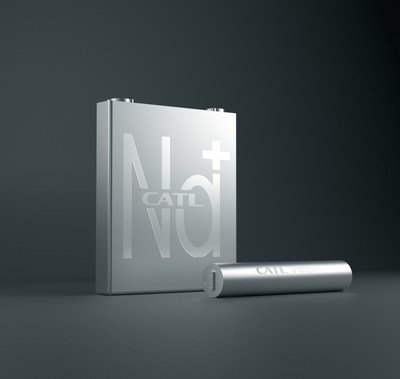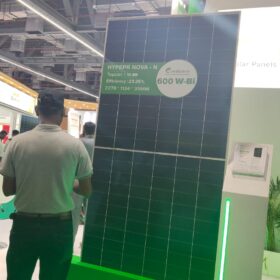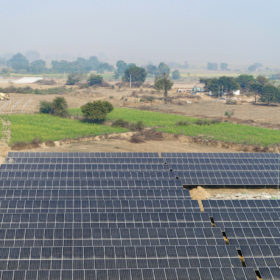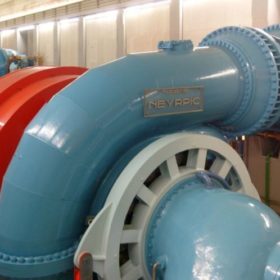From pv magazine International
Battery storage is an enabler of the energy transition, especially powerful lithium-ion devices. The devices have their drawbacks, though, as mining practices and the cost of lithium have raised concerns.
Robin Zeng, chairman of Contemporary Amperex Technology Co Ltd (CATL), a battery manufacturing heavyweight, has presented a solution. The company is commercially launching lithium-free sodium-ion (Na-ion) batteries.
The manufacturer says its newest product ticks all the boxes for modern customer requirements. For starters, the battery reportedly shows a high energy density, of 160 Wh/kg. That is a little short of the 200 Wh/kg achieved by the LFP devices CATL ships for Tesla, but Zeng has already suggested the second generation of Na-ion batteries will reach the 200 Wh/kg mark. Modern NMC-811 devices show energy densities more in the region of 300 Wh/kg.
However, the sodium-ion product is apparently not lagging in its other electrochemical properties, and can reportedly charge to 80% in just 15 minutes, for example. On top of that, comes the fact the battery is said to be working well in low temperatures. At -20 degrees Celsius, the Na-ion device retains 90% of its nameplate capacity, according to its manufacturer. Also, in terms of thermal stability, Chinese company CATL says its new product exceeds national standards.
First application
CATL will use the first generation of the batteries to address the electric vehicle (EV) market and has highlighted key features such as its low-temperature performance, which would render it suitable for automotive markets with severe winters. CATL will initially roll out battery packs for EVs that combine sodium-ion and lithium-ion batteries, to compensate for the shortage of energy density. To achieve this, CATL has also developed a battery management system.
“The lower energy of the sodium-ion cells suggests that the technology may be more suited for stationary energy storage applications, which are less restrictive, while the unveiling of battery packs combining both sodium-ion and lithium-ion cells could point towards compromise in performance for low-cost electric vehicles, with the potential to disrupt the mass market,” said Wood Mackenzie research analyst Max Reid.
Same working principles
Sodium-ion batteries have a similar working principle to lithium-ion devices. In both, the ion travels between anode and cathode, dropping or absorbing electrons. Though lithium is very good at this, it is also scarce as a raw material, with most of its production concentrated in Chile, Australia, and China.
Not only is the lithium market volatile, due to geographical concentration of the metal, but its extraction is also under fire for its intensive water use and other aspects of its environmental footprint. Sodium-ion batteries have been suggested as a lithium-free alternative.
Wood Mackenzie sees the arrival of sodium-ion devices as offering the potential to relax supply constraints in battery raw materials. “About 93% of CATL’s cell capacity is located in China,” said senior analyst Le Xu. “Developing sodium-ion battery technology could diversify their raw materials consumption, especially [of] lithium. Battery suppliers such as CATL, Tesla, [and] LG Chem have proactively signed supply agreements with miners in Australia and Chile which pushed lithium chemicals spot prices to a new high in the past six months.”
Sodium is one of the most abundantly available elements in the earth’s crust and can be mined by performing electrolysis on sodium-chloride (table salt), for example. It can also be found in other chemical connections.
The challenge with sodium-ion batteries, has been the larger volume of sodium ions required, compared to lithium ions. To accommodate the extra ions, particular requirements regarding the material’s structural stability and kinetic properties have to be considered and attempts to date have resulted in capacity fading rapidly in Na-ion devices.
New materials
To meet the challenge, CATL said it used Prussian white material with a higher specific capacity. The material NaxFe[Fe(CN)6]y·nH2O has been considered a potential cathode candidate for Na-ion batteries by other research teams, too, but practical limitations relating to capacity and cycling stability had inhibited a commercial breakthrough. CATL said it has solved the problem by redesigning the bulk structure of the material and rearranging the electrons. On the anode side, CATL has also developed a novel carbon-based material, the highly porous structure of which enables the storage of sodium ions, ensuring cycle performance.
“Sodium-ion technology has long been touted for commercial battery use due to sodium’s low cost and high abundance, relative to lithium, and CATL producing large scale sodium-ion batteries shows the technology’s appeal is coming to fruition sooner rather than later,” said WoodMac’s Reid.
With an eye on production costs, Qisen Huang, deputy dean of the CATL Research Institute, said sodium-ion battery manufacturing would be highly compatible with currently-used production methods and equipment. CATL has started industrial production of the devices and wants to stabilize the industrial chain for such products by 2023. Doing so will require a joint effort by upstream suppliers and downstream consumers, CATL noted, and it has invited the two groups, and research institutes, to join forces to drive deployment of the product.
This content is protected by copyright and may not be reused. If you want to cooperate with us and would like to reuse some of our content, please contact: editors@pv-magazine.com.









By submitting this form you agree to pv magazine using your data for the purposes of publishing your comment.
Your personal data will only be disclosed or otherwise transmitted to third parties for the purposes of spam filtering or if this is necessary for technical maintenance of the website. Any other transfer to third parties will not take place unless this is justified on the basis of applicable data protection regulations or if pv magazine is legally obliged to do so.
You may revoke this consent at any time with effect for the future, in which case your personal data will be deleted immediately. Otherwise, your data will be deleted if pv magazine has processed your request or the purpose of data storage is fulfilled.
Further information on data privacy can be found in our Data Protection Policy.